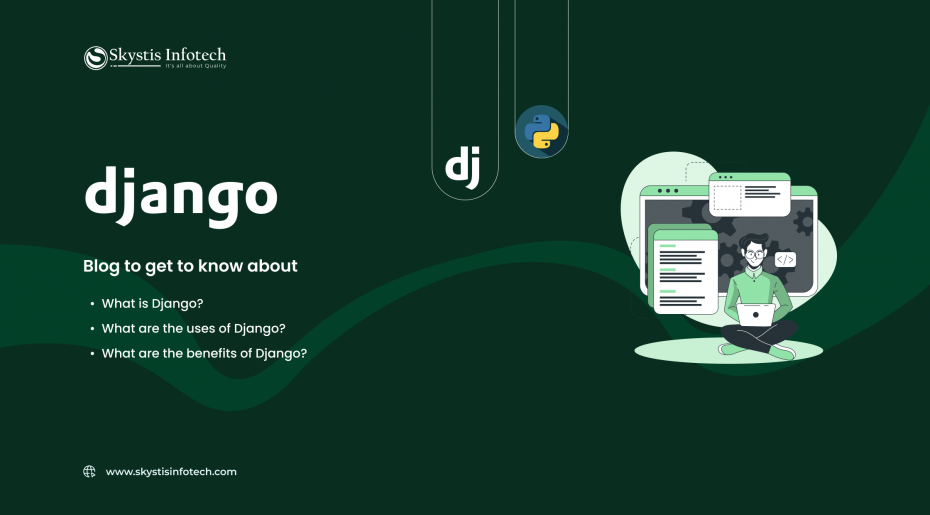
Introduction to DJANGO
What is DJANGO?
Django is a high-level Python web framework that enables the rapid development of secure and maintainable websites. It takes less time to build an application after collecting client requirements. Django takes care of the difficult stuff so that you can concentrate on building your web applications. A framework is simply a collection of modules that facilitate development.

Uses Of DJANGO
Operating System Dependent :
Django framework runs on any platform like PC, Windows, MAC , etc. It provides a layer between the developer and database called ORM (object-relational mapper), which makes it possible to move or migrate our applications to other major databases with few lines of code change.
Scalable and Reliable :
Django is a well-maintained web application framework and widely used across the industries. Once Django applications deployed then they can be managed by an authorized developer with a single command in a cloud environment.
A customisable application :
When you’re building a highly customisable app, such as a social media website. You don’t have to worry about reinventing the wheel. Just let Django cover the basics, and focus on the unique parts you need to tweak and experiment with, such as the interaction between users, or the ability to share different types of media.
Good Documentation :
Django provides well-organized documentation with example code which is very helpful in building different kinds of real-world applications. For quick reference, good documentation for any framework or language matters a lot especially when we get stuck somewhere during the development phase of any project.
WHY DJANGO IS POPULAR?
The Django is very demanding as well as popular due to its rapid development features mentioned below-
Django advocates best practices for SEO:
MEAN stack includes one of the most popular database management systems, MongoDB. It is an ideal choice for large-sized, enterprise-level applications and websites. The entire framework has a base of Object-oriented programming, which makes the development process simpler and saves time.
Security:
Django, by default, prevents a whole lot of common security mistakes. To begin with, Django camouflages or hides your site’s source code by dynamically generating web pages and through templates sending information to web browsers, from direct viewing on the Internet.
It’s been crowd-tested:
The MEAN stack has a code maintainability feature that reduces code liability and saves the developer’s time. Isomorphic code is defined as the code that can run in the client and the server’s end both. MEAN stack app development supports easy transfer and reusability of codes from one framework to another.
Its admin panel:
One of the most popular features of Django is its automatic admin interface. Rather than build something manually, with Django you get a powerful and customizable admin panel generated automatically with Python code.
BENEFITS OF DJANGO
Django has a REST framework for building APIs :
MEAN stack includes one of the most popular database management systems, MongoDB. It is an ideal choice for large-sized, enterprise-level applications and websites. The entire framework has a base of Object-oriented programming, which makes the development process simpler and saves time.
Django has its own infrastructure:
Django doesn’t depend on any outside solutions. It has pretty much everything, from a web server and a templating engine to an Object Relational Mapper (ORM), which allows the framework to use different databases and switch between them within one project.
Django suits any kind of project:
Django is not an enterprise solution like C# or Java, yet it suits most types of projects, no matter their size. Using Django for web development of a blog or a book database, for instance, is an excellent choice as well since it has everything you need to quickly assemble a working application.
Django is backward-compatible:
You can use the interface of Django’s older versions, and most of its features and formats. In addition, it has an understandable roadmap and descriptions.
